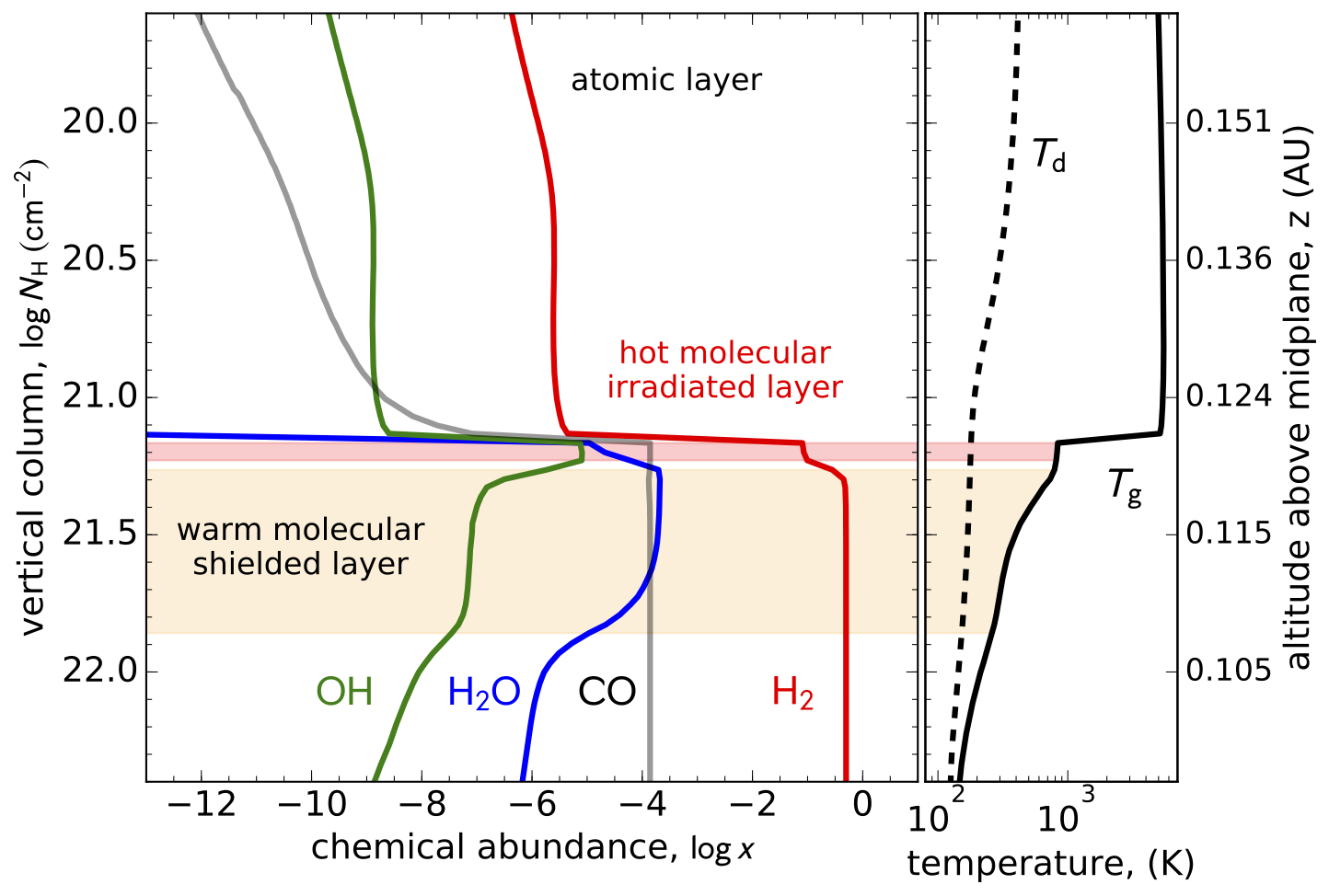Thermal-Chemical Models
We model the layered structure of the disk gas (illustrated below) and use this information to predict and interpret observations of atomic and molecular emission. Note the very high temperatures in the hot atomic surface layer, and the interesting transition to molecular conditions as the chemical abundance of carbon monoxide, water, and other molecules increase, while the temperature in the same region plummets.
Some Outstanding Questions
How does the mass and radiation field of a star determine the molecular composition of a circumstellar disk? Is there any gas remaining after the (millimeter-sized) dust has coagulated into (kilometer-sized) planetesimals? Is there an evolutionary trend of disk properties that is predictive of exoplanet characteristics? These are the types of questions that we think about and explore with numerical models and observations. The launch of JWST with mark the beginning of an era of new observations and constraints on circumstellar material, and
Additional Reading
Our recent work considering the role of Lyman-alpha radiation and photochemical heating builds on pioneering studies of how X-rays heat disk gas. These studies complement work that considered the photo-electric heating of disk gas, which is important high in the disk surface layers, where the size of the dust grains is small and similar to dust in the interstellar medium. As the disk evolves and the dust grains grow and settle to the midplane, the role of the photoelectric effect decreases. Below the irradiated layer, where accretion is thought to occur, heating via turbulence may have an observable signatures on the abundance and temperature of molecules.

